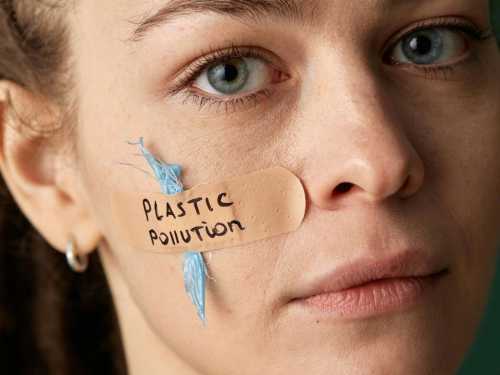
Microplastics, which we breathe in and get through our water and food, may have a potential impact on bone health, according to a review of 62 scientific papers published in Osteoporosis International.
According to the studies reviewed, scientists concluded that microplastic particles are able to penetrate the bone marrow and disrupt the work of stem cells, accelerate inflammatory processes, and stimulate the destruction of bone tissue.
Bone marrow is the “factory” inside our bones where new cells are born, and stem cells are universal “workers” that can turn into bone cells. When microplastics get there, they sabotage the work of this factory. In addition, our bones are constantly being renewed: old tissue is destroyed and new tissue is built. Microplastics can disrupt this balance, forcing the “destruction team” to work more actively than the “construction team”. As a result, bones become weaker.
In experiments on cells, accelerated aging and decreased viability have been observed, and in animals, disturbances in bone microarchitecture, deformities, and even pathological fractures have been observed. In some cases, skeletal growth has been slowed, which is especially worrisome for children and adolescents.
When scientists tested this in the laboratory, cells exposed to plastic “tired” and died more quickly. And in animals, the internal structure of bones, which resembles strong honeycombs, began to collapse, making them brittle. This led to fractures even without serious injuries. And for a growing organism, this is even more dangerous, because it can prevent the skeleton from forming normally.
Compounding the problem is the ever-increasing amount of microplastics in the environment: more than 400 million tons of plastic are produced annually, and the particles end up in the air, water, and food. Researchers believe that exposure to microplastics may be an underestimated factor in the rise in osteoporosis-related fractures.
Every plastic bottle or bag eventually breaks down into millions of tiny particles that never disappear. They end up in rivers, soil, and then in our food and water. Osteoporosis is a disease in which bones become as brittle as dry biscuits. Previously, its causes were thought to be age or a lack of calcium. Now scientists suspect that microplastics may be another, previously unseen, culprit that makes our bones vulnerable.
Scientists from the University of Campinas plan to test this hypothesis in practice in the near future: they plan to study how microplastics affect bone strength in animals. The goal is to find out whether plastic pollution could be a hidden cause of the increase in osteometabolic diseases.
A hypothesis is essentially a reasonable guess. We have a lot of circumstantial evidence now, but we need a direct experiment to say for sure, “Yes, microplastics are causing these changes.” “Osteometabolic diseases” is the scientific term for all the problems related to how bones are built and renewed. Scientists want to understand whether plastic is the same “silent enemy” that imperceptibly undermines the health of our skeleton.






